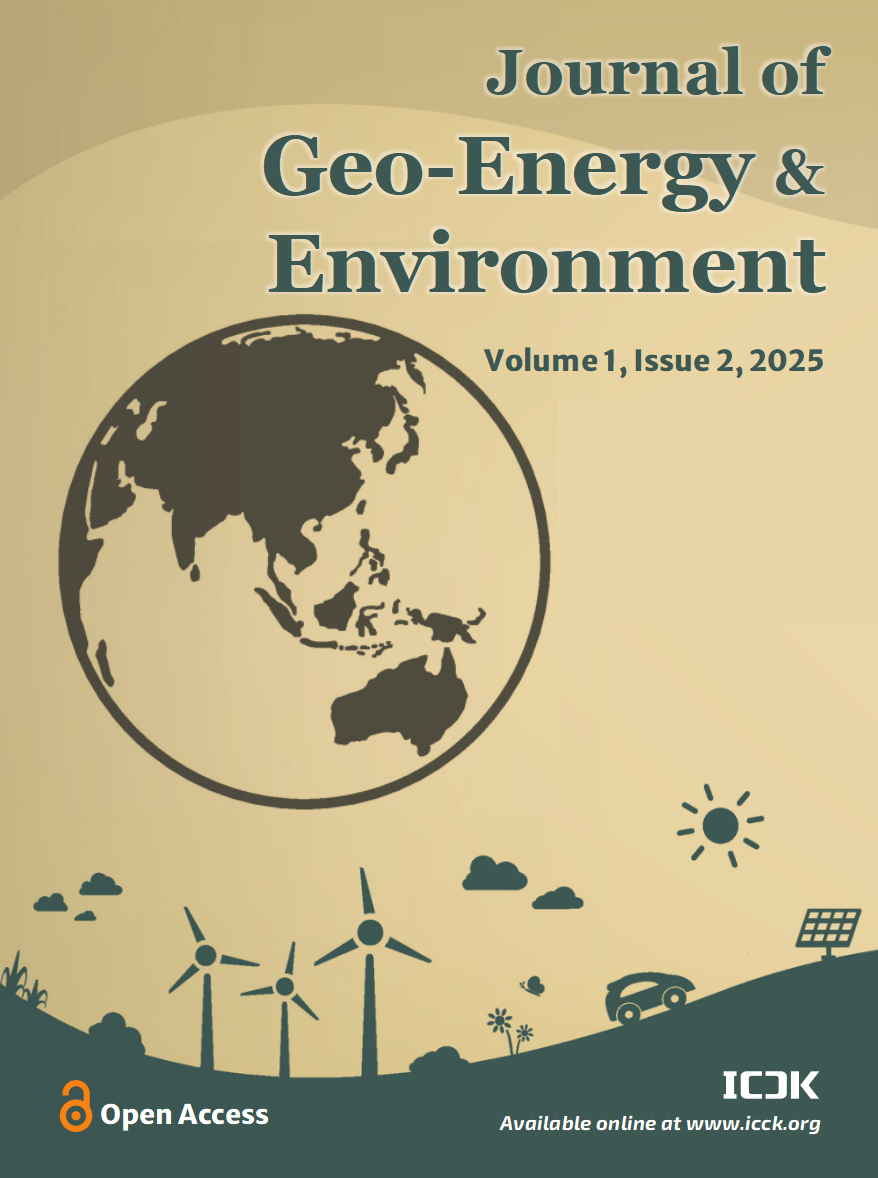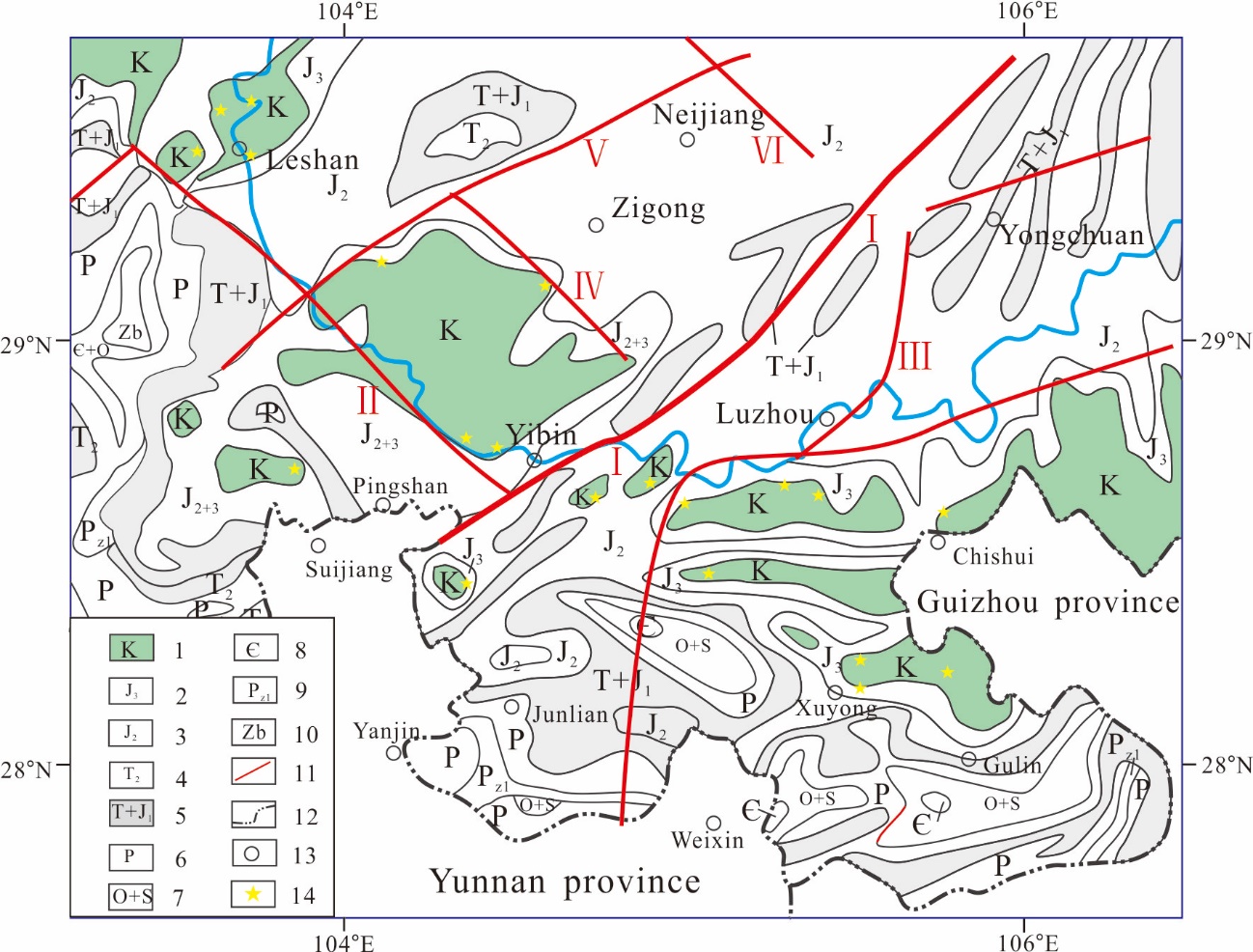Abstract
Danxia landform, recognized for its steep cliffs and red coloration, has drawn significant scientific attention. While Chinese Danxia Landforms are UNESCO World Heritage Sites, their genesis and evolution, particularly in less-explored regions, remain under study. The southern Sichuan Basin, one of China's three largest Danxia outcrop areas, offers a unique case study due to its distinct geological setting and limited research. This study investigates the genesis of Danxia landforms in the southern Sichuan Basin using a multi-faceted approach. Field observations documented geomorphological characteristics and stratigraphy of the Danxia formations. Tectonic analysis, using regional structural data and fault mapping, assessed the impact of tectonic uplift and deformation. The findings suggest that the genesis of Danxia landforms in the southern Sichuan Basin is driven by four factors: (1) thick, well-bedded red sandstones and conglomerates; (2) regional tectonic structures, such as faults and folds; (3) episodic tectonic uplift, creating topographic relief and fluvial incision; and (4) the combined effects of weathering, erosion, and gravity shaping the cliffs. The analysis challenges the prevailing southeast-to-northwest evolutionary model for Chinese Danxia, as the southern Sichuan Basin follows a distinct developmental trajectory, influenced by regional tectonic settings and external forces. This study shows that Danxia genesis is a complex interaction of lithological, tectonic, and geomorphic processes. The findings highlight regional variability and underscore the importance of considering regional tectonic context and external forces in understanding Danxia evolution across China. This research deepens understanding of Danxia genesis and provides insights for conserving these globally significant landscapes.
Data Availability Statement
Data will be made available on request.
Funding
This work was supported by the Scientific Research Project of Sichuan World Heritage Popularization Base under Grant YC25-01.
Conflicts of Interest
The authors declare no conflicts of interest.
Ethical Approval and Consent to Participate
Not applicable.
Cite This Article
APA Style
Li, P., Cao, Y., & Li, H. (2025). Origin and Evolution of the South Sichuan Basin Danxia Landform: Insights into Broader Chinese Danxia Landform Development. Journal of Geo-Energy and Environment, 1(2), 76–87. https://doi.org/10.62762/JGEE.2025.503978
Publisher's Note
ICCK stays neutral with regard to jurisdictional claims in published maps and institutional affiliations.
Rights and Permissions

Copyright © 2025 by the Author(s). Published by Institute of Central Computation and Knowledge. This article is an open access article distributed under the terms and conditions of the Creative Commons Attribution (CC BY) license (
https://creativecommons.org/licenses/by/4.0/), which permits use, sharing, adaptation, distribution and reproduction in any medium or format, as long as you give appropriate credit to the original author(s) and the source, provide a link to the Creative Commons licence, and indicate if changes were made.


 Submit Manuscript
Edit a Special Issue
Submit Manuscript
Edit a Special Issue

 Copyright © 2025 by the Author(s). Published by Institute of Central Computation and Knowledge. This article is an open access article distributed under the terms and conditions of the Creative Commons Attribution (CC BY) license (https://creativecommons.org/licenses/by/4.0/), which permits use, sharing, adaptation, distribution and reproduction in any medium or format, as long as you give appropriate credit to the original author(s) and the source, provide a link to the Creative Commons licence, and indicate if changes were made.
Copyright © 2025 by the Author(s). Published by Institute of Central Computation and Knowledge. This article is an open access article distributed under the terms and conditions of the Creative Commons Attribution (CC BY) license (https://creativecommons.org/licenses/by/4.0/), which permits use, sharing, adaptation, distribution and reproduction in any medium or format, as long as you give appropriate credit to the original author(s) and the source, provide a link to the Creative Commons licence, and indicate if changes were made. 